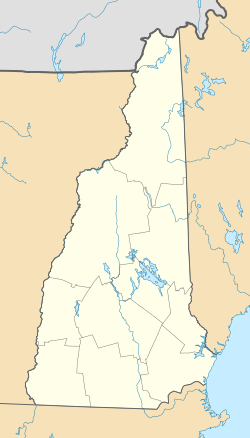Hampton River (New Hampshire) facts for kids
Quick facts for kids Hampton River |
|
|---|---|
| Country | United States |
| State | New Hampshire |
| County | Rockingham |
| Towns | Hampton, Hampton Falls |
| Physical characteristics | |
| Main source | Confluence of Taylor and Hampton Falls rivers Hampton/Hampton Falls 0 ft (0 m) 42°54′47″N 70°50′44″W / 42.91306°N 70.84556°W |
| River mouth | Hampton Harbor Hampton 0 ft (0 m) 42°53′58″N 70°49′13″W / 42.89944°N 70.82028°W |
| Length | 1.0 mi (1.6 km) |
| Basin features | |
| Tributaries |
|
The Hampton River is a special kind of waterway called a tidal inlet. This means that ocean tides flow in and out of it. It's located in the towns of Hampton and Hampton Falls in New Hampshire, United States.
This river is surrounded by the biggest salt marsh in New Hampshire. A salt marsh is a flat, grassy area that gets flooded by salty ocean water during high tide. This huge marsh covers more than 3,800 acres (15 km2)!
Contents
Where the River Begins
The Hampton River starts when two other rivers meet. This meeting point is called a confluence. The two rivers that join to form the Hampton River are the Taylor River and the Hampton Falls River.
River's Journey to the Ocean
The Hampton River flows for about one mile (1.6 km). After this short journey, it gets much wider and turns into Hampton Harbor. This harbor is an estuary, which is a place where a river meets the sea. Here, fresh water from the rivers mixes with salty ocean water.
The Hampton Harbor also gets water from smaller tidal channels. These include the Browns River and the Blackwater River.
Connecting to the Atlantic
Finally, Hampton Harbor connects to the Atlantic Ocean. It does this through a special path called the Hampton Harbor Inlet. This inlet is a channel that has been dredged, meaning it was dug out to make it deeper for boats.
The inlet is found between Hampton Beach and Seabrook. A bridge called the Hampton Bridge crosses over this important waterway.
The Salt Marsh Ecosystem
The large salt marsh around the Hampton River is a very important natural area. It acts like a giant filter, cleaning the water before it reaches the ocean. Salt marshes also provide a safe home for many different plants and animals.
- Plants: Special grasses like saltmarsh cordgrass grow here. They can handle being covered in salty water.
- Animals: Many kinds of fish, crabs, and birds live in the marsh. It's a vital spot for young fish to grow and for migratory birds to rest and find food.
This unique environment helps protect the coastline from storms and erosion. It's a busy and important part of New Hampshire's natural world.



